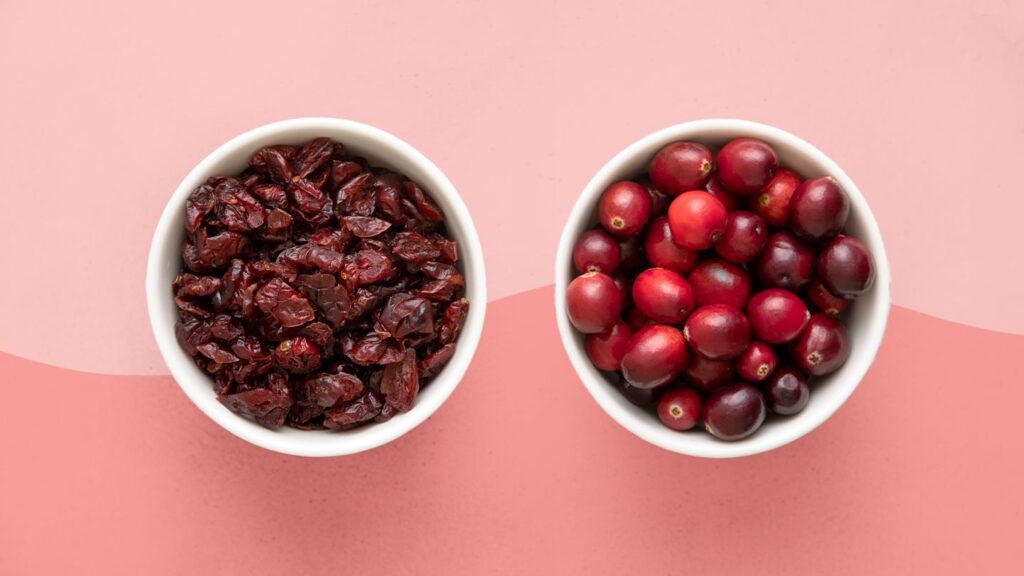When you enjoy the tart flavor of a cranberry dish or glass of juice, a lingering question might cross your mind: Does cranberry juice change the color of your urine? Indeed, their vibrant appearance may remind you of beets, which can make your pee turn red. Ahead, we delve into the science behind whether or not this fruit’s bright hue has a colorful final destination.
Can Cranberry Juice Change Urine Color?
According to Harvard Health Publishing, urine may appear to be yellow, red, or brown. A “normal” urine color is pale yellow; if your urine is darker yellow, it may mean you’re dehydrated.
Red urine caused by blood in the urine can vary from light pink to very dark red. Harvard Health Publishing notes that strenuous exercise can also result in urine turning red. A harmless cause known as beeturia, which can occur after eating beets, may also turn urine red. So does cranberry juice make your pee red, too? Currently there is no condition known as “cranberry juice pee” that would affect the color of urine after drinking cranberry juice or consuming cranberries, unlike when you eat beets or drink beet juice.
Brown urine and orange urine may occur when there is a liver condition or can be due to certain medications. Other colors that can appear in urine include blue — likely because of an inherited condition — and green, due to medications or a urinary tract or bacterial infection that has entered the bloodstream.
Cranberry Heath Benefits
Cranberry, a native evergreen shrub, grows throughout North America and produces red berries that are a staple on the Thanksgiving table in the form of sauce. Cranberry juice is widely available in stores and is usually sweetened with added sugar or another fruit juice such as apple or grape.
Pure or unsweetened cranberry juice, in particular, is often used as a dietary supplement to treat or prevent urinary tract infections, according to the National Center for Complementary and Integrative Health (NCCIH).
If you have a urinary tract infection (UTI), it’s best to consult with your doctor regarding treatment since more research is needed on whether or not cranberry juice is effective for getting rid of UTIs, according to Cleveland Clinic.
Cranberries or the leaves from the cranberry plant have been used in traditional medicine to treat bladder, stomach, and liver disorders; wounds; and diabetes, according to NCCIH. Few cranberry juice side effects have been reported.
Cranberries have other beneficial attributes. For instance, a study published in 2015 in The Journal of Nutrition showed that drinking two 8-ounce glasses of cranberry juice a day lowered several risk factors for cardiovascular disease, diabetes, and stroke. This may be due to the fruit’s antioxidants, according to the American Heart Association.
Pure cranberry juice is also nutritionally beneficial. The U.S. Department of Agriculture (USDA) shows that unsweetened cranberry juice contains the minerals calcium, magnesium, potassium, selenium, iron, and zinc; and is a good source of 15 essential vitamins, including vitamins C, B6, B12, E, K, and A, as well as thiamine, niacin, and riboflavin.
A 1-cup serving of unsweetened cranberry juice contains 116 calories, almost a gram (g) of protein, and 30 g of carbohydrates, according to the USDA. Although it is unsweetened, pure cranberry juice does contain 30 g of naturally occurring sugar. Cranberry supplements are also available in the form of cranberry pills, extracts, powder, and capsules.
Drinking pure cranberry juice is generally considered to be safe, suggests NCCIH, although drinking it in large amounts could cause an upset stomach and may over time increase the risk of kidney stones. Large doses of cranberry may alter levels of warfarin, an anticoagulant (blood thinner).

